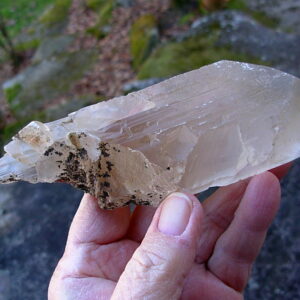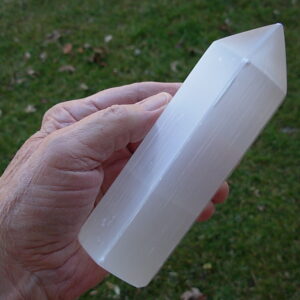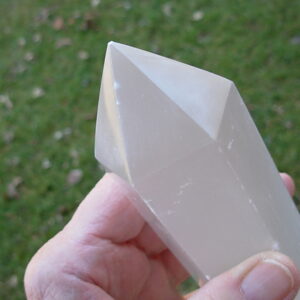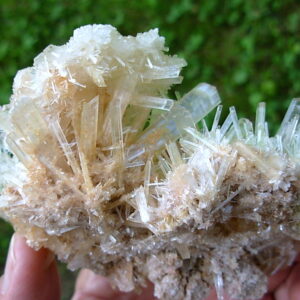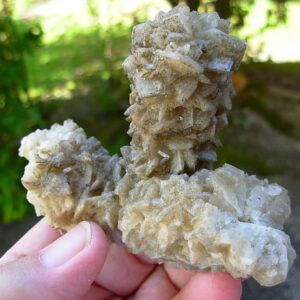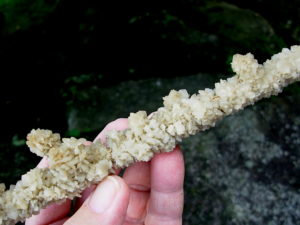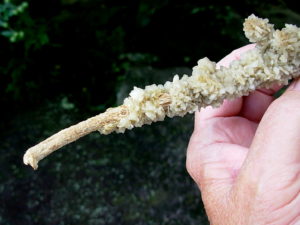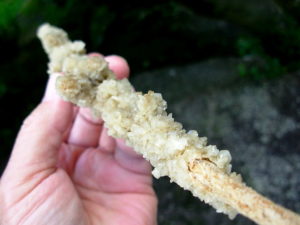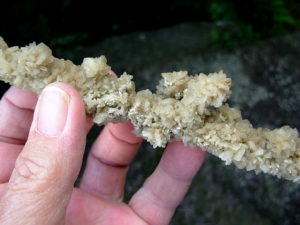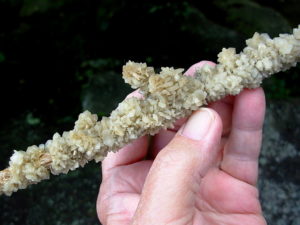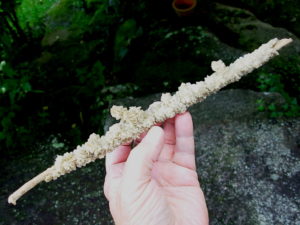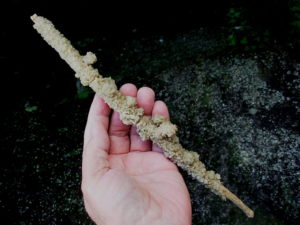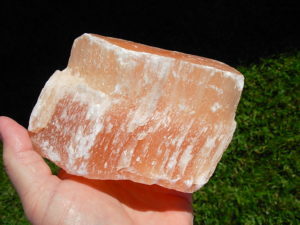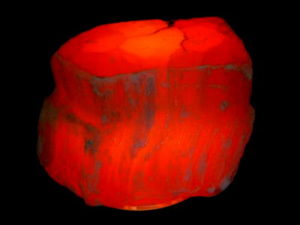Gypsum/Selenite
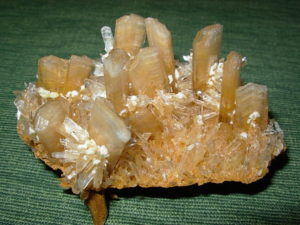 Gypsum is one of the most common, rock-forming minerals, developing thick beds formed by the evaporation of extremely salt laden waters. Gypsum is associated with halite and sulfur. It is deposited from lakes, seawater, hot springs, volcanic moisture, and sulfate solutions in underground veins. Anhydrite in underground veins can be converted into gypsum by hydration from groundwater close to surface areas. Gypsum dissolves over time in water, and is rarely found in the form of sand. A well known oddity is the White Sands National Monument in the state of New Mexico. The unique conditions there have produced a 275 square mile area of white gypsum sand. In 1933 President Herbert Hoover declared the gypsum dunes a protected national monument to prevent commercialization of the area.
Gypsum is one of the most common, rock-forming minerals, developing thick beds formed by the evaporation of extremely salt laden waters. Gypsum is associated with halite and sulfur. It is deposited from lakes, seawater, hot springs, volcanic moisture, and sulfate solutions in underground veins. Anhydrite in underground veins can be converted into gypsum by hydration from groundwater close to surface areas. Gypsum dissolves over time in water, and is rarely found in the form of sand. A well known oddity is the White Sands National Monument in the state of New Mexico. The unique conditions there have produced a 275 square mile area of white gypsum sand. In 1933 President Herbert Hoover declared the gypsum dunes a protected national monument to prevent commercialization of the area.
When heated under appropriate conditions, gypsum forms plaster of Paris. Gypsum is extremely useful for many practical applications and for works of art. In particular, it is used for wallboard for buildings, as a component of concrete for the construction of highways and bridges, and as a soil conditioner for agriculture. The Clear variety is called selenite. The translucent variety, called alabaster, is a valuable ornamental stone. When converted to plaster of Paris, it is used in sculpture, architecture, fire protection, and theatrical sets. There are many formations of Gypsum that make outstanding collection specimens, and it is a favorite of rockhounds!
For a description from Wikipedia, the free encyclopedia http://en.wikipedia.org/wiki/Gypsum
-
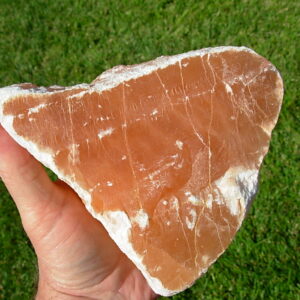
3.29 lbs of Enchanting Natural Orange Selenite (SOLD)
$42.00 Read more -
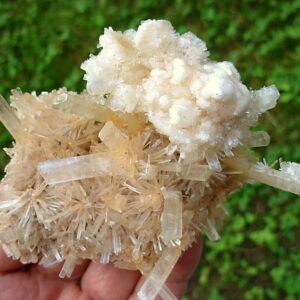
Butterscotch Selenite Plate from Australia
$19.00 Read more -
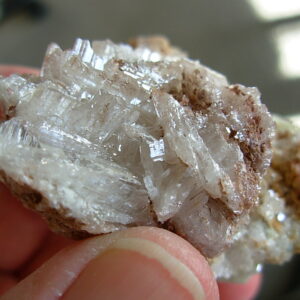
Gypsum Selenite with Matrix from Nevada
$22.00 Add to cart -
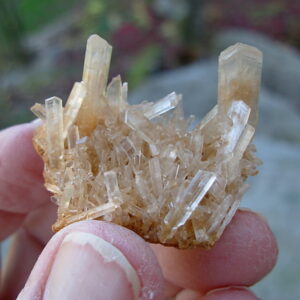
Rare Butterscotch Selenite Cluster from Australia
$35.00 Read more -
Selenite Point from Socorro, New Mexico
$39.00 Read more -
Selenite Tower / Obelisk Point Sculpture 43
$26.00 Add to cart -
Selenite Tower / Obelisk Point Sculpture 44
$26.00 Add to cart -
Unique Pale Butterscotch Selenite Display Specimen from Australia
$139.00 Add to cart -
Very Rare Selenite Tee from a branch (SOLD)
$29.00 Read more
Interesting Gypsum Specimens from Previously Sold Listings
Very Rare Selenite formed on a branch
Absolutely the most unique Selenite Crystal formation found in California by Maggie McShan (1915-2004) This is from her collection in Needles, California. This desirable specimen has Gypsum Selenite crystals that formed on a shrub branch and was found with several other specimens with smaller branch inclusions. This specimen is EXTREMELY Fragile. Care will be taken, packing this in a Medium Flat Rate box with lots of padding, but some of these crystals may be damaged in shipping. There are currently 4 separation breaks on the branch, we suppose from the branch being flexed years ago. This specimen is estimated to have been collected in the 1960's and was one of Maggie's favorite pieces.
This piece weighs 2.5oz or 0.15 lb (72g) The crystal formation measures 10" (25cm) long on a branch that is 11.75" (29.5cm) long with a crystal growth formation from 1/2" to 3/4" (12.7 to 19mm) in diameter on a 1/4" (5.7mm) diameter branch the widest crystal growth branch off point measures 1.5" (40mm)
Orange Selenite
Orange Selenite is a very impressive stone. It has a peachy orange color and has white fibrous strands as you can see from the rough sides. It carves and polishes easily and displays a brilliant orange (see picture on right side) when backlit or placed on a lighted display. Most of this is found in Pakistan or Morocco and is rather difficult to find quality specimens for carving as other minerals form in the selenite. Most of the less pure specimens are made into candle holders for Tea Light or Votive styles of Candles.

